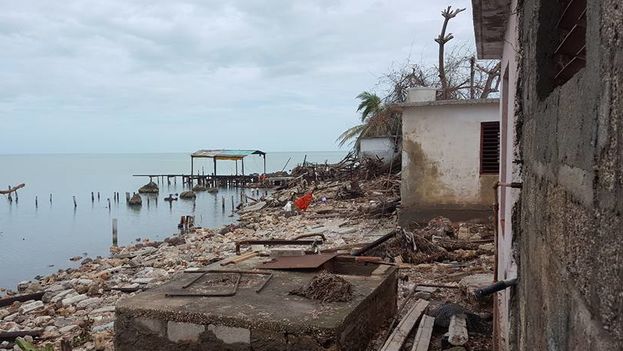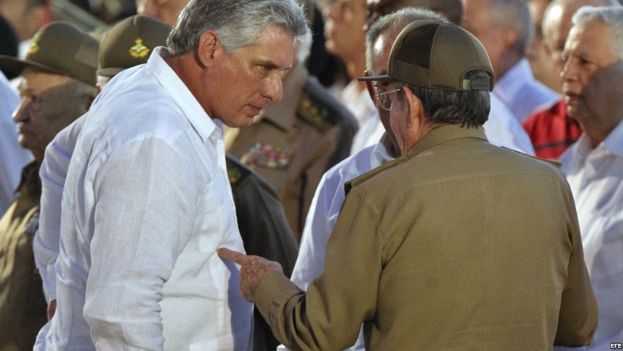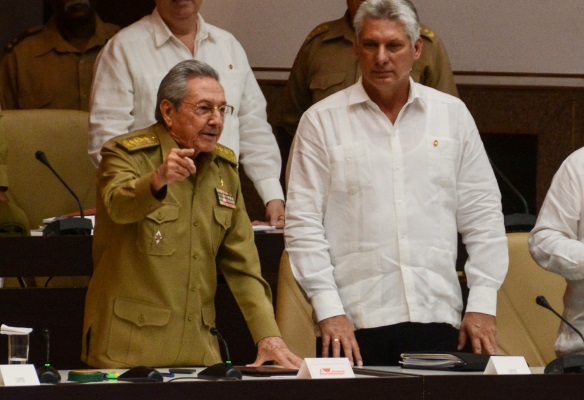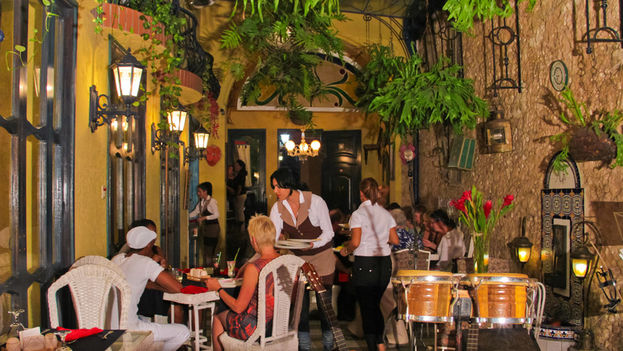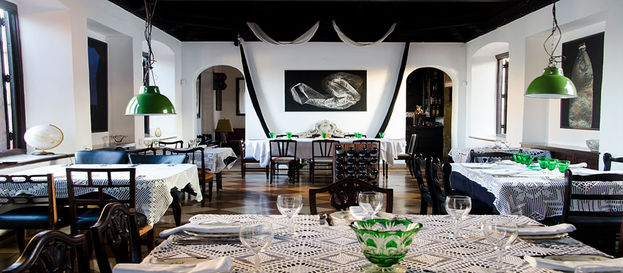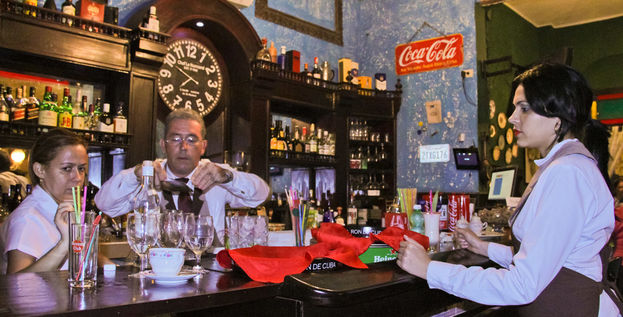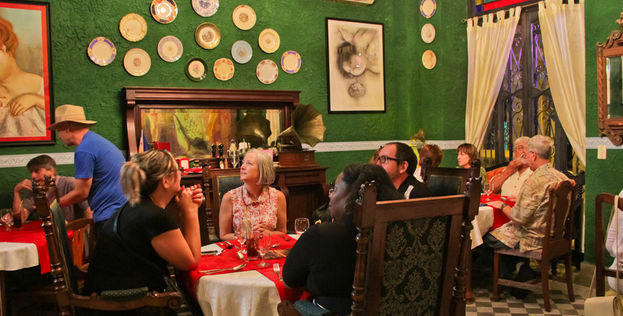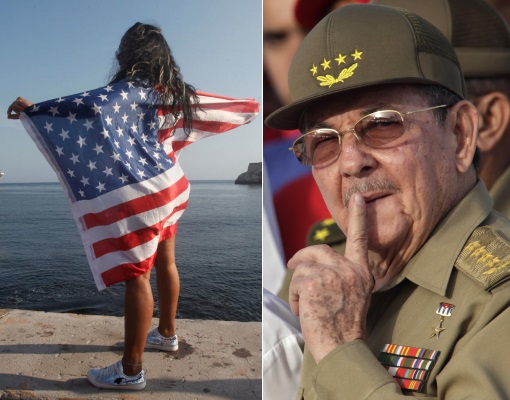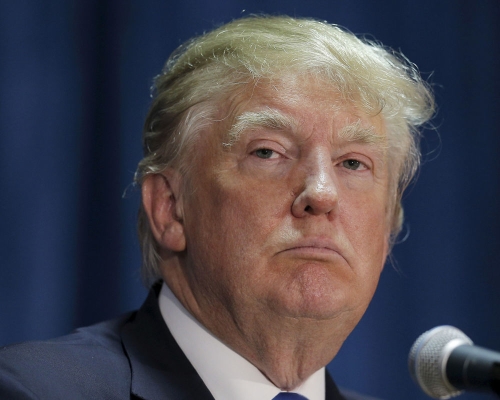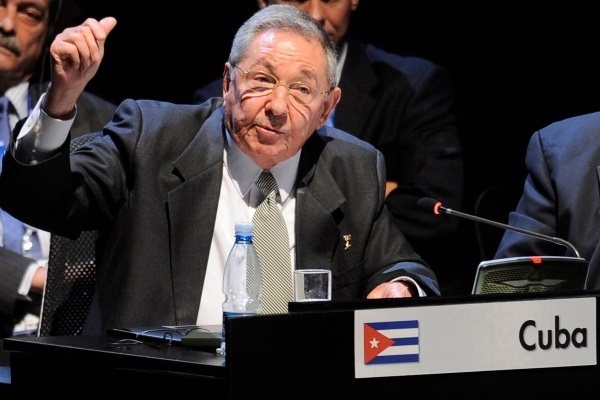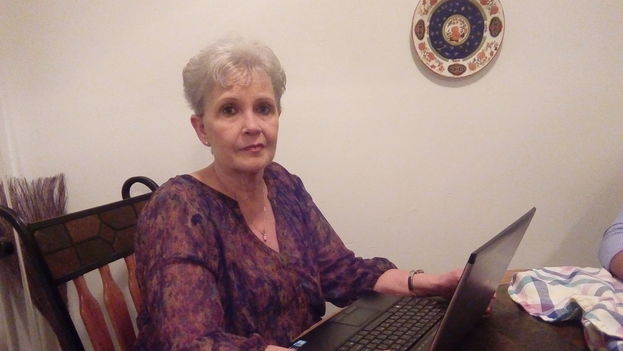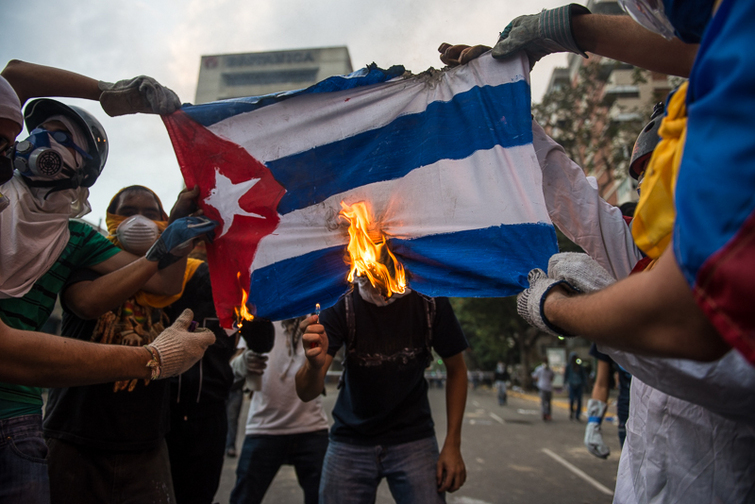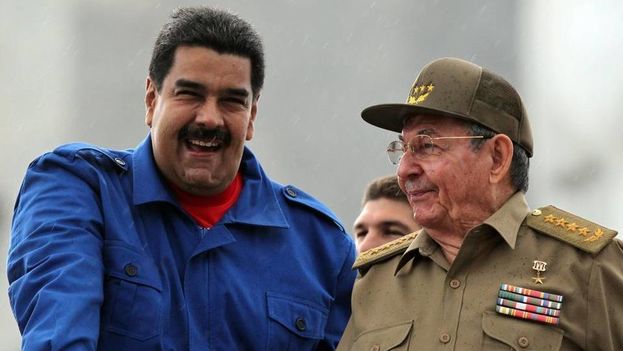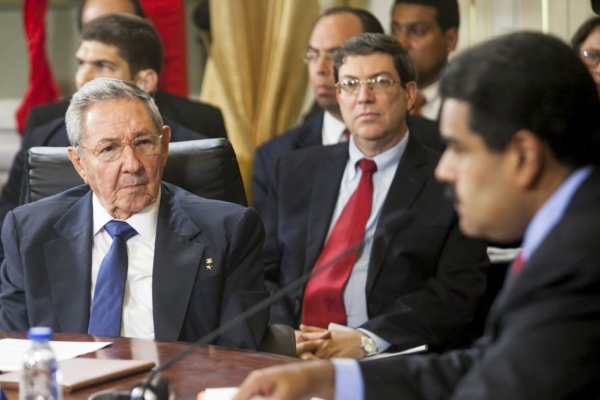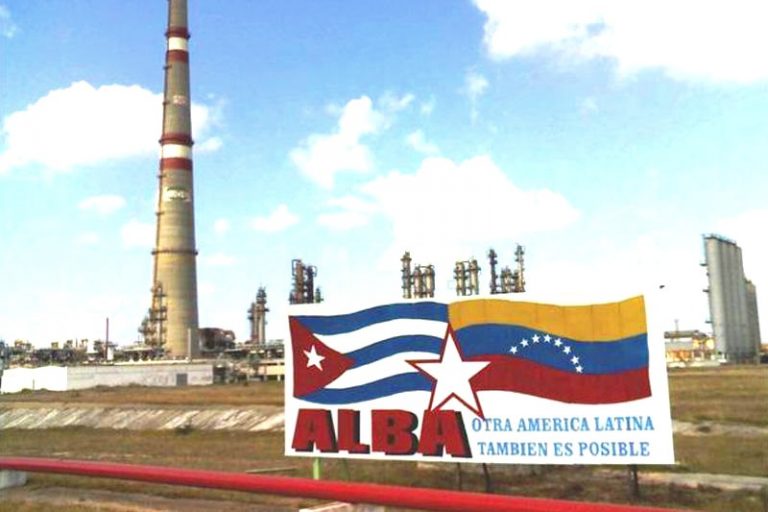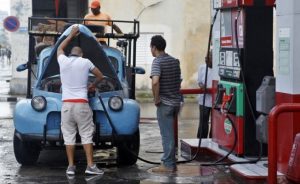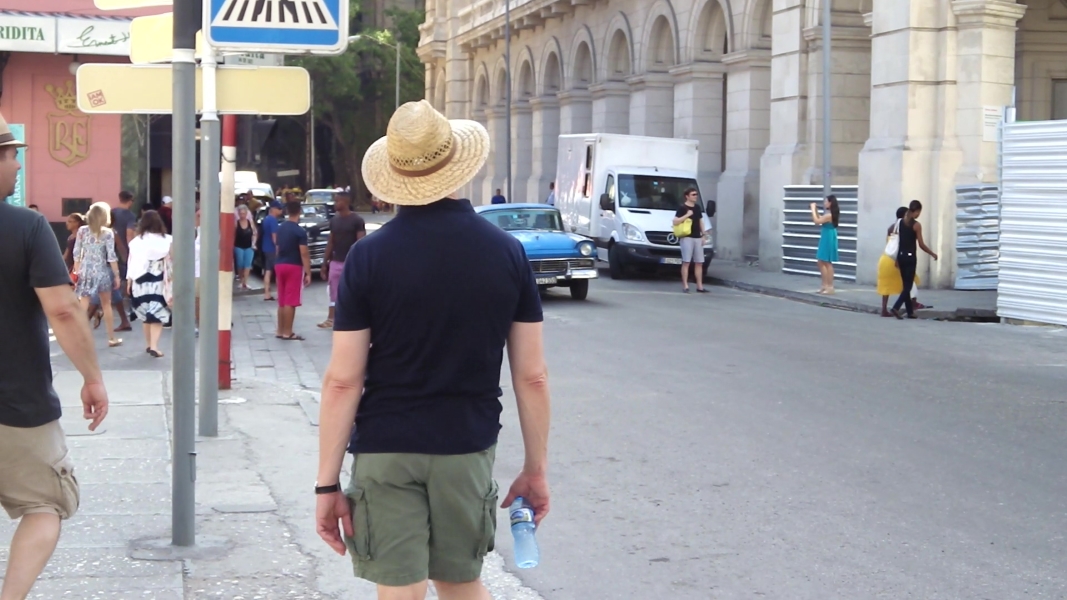Ironically, it was the feast day of the Cuban patron saint, our Lady of El Cobre, who, according to legend, hundreds of years ago saved three fishermen from the raging sea in the bay of Nipe. The children of Punta Alegre, however, did not count on her divine protection. In fact, they did not have anyone’s.
After the catastrophe, when the inhabitants of Punta Alegre began to come out of the few remaining homes or shelters in which they had taken refuge temporarily, they encountered a panorama of utter devastation. A pile of debris, sea corals, chunks of roofs, scraps of furniture, tree branches, and mud stretched over what once was a quiet coastal town. Some fishing boats had been swept by the sea into the village and floated between houses. Only the more solid masonry constructions, barely a minimum percentage of the precarious housing found in the town resisted the hurricane’s fury. continue reading
Witnesses confirm that nothing resembles the picturesque little town that Punta Alegre once was, with its smells of sea and fish, settled in a privileged geographical landscape
Irma’s attack, with sustained winds of 240 kph (149 mph) and the incursion of the sea, totally or partially destroyed both the humble houses and almost all of the scarce State facilities, including the fishing cooperative – whose already weak fleet suffered the total loss of or damage to several boats – the two shopping areas, the camping base, the two restaurants, the nursing home, whose dining room served food to retirees of lower income with no subsidiary help, and other facilities. Not even the village church escaped the catastrophe: half of the belfry collapsed, including everything besides the bell.
The amount and total magnitude of the damage is still unknown, but according to the testimonies of some neighbors who have managed to leave the town for other places where communications and electricity service have already been restored, the current image of Punta Alegre is of utter desolation. Some say that more than 80% of the town was destroyed, but, so far, there are only unconfirmed estimates. In any case, the witnesses say that nothing resembles the picturesque little town that Punta Alegre once was, with its sea and fish smell, set in a privileged geographical landscape between the bay to the north, and green hills that descend into the horizon to the south.
Ronald is a 30-year-old from Punta Alegre who was visiting his parents when Irma raged over the place where he was born. Five days later, back in Havana, where he lives with his wife and children, he tells us that “the hurricane has delivered the coup de grace to Punta Alegre”.
“The truth is that the decadence had begun there many years ago, since the Máximo Gómez Sugar Mill (formerly Punta Alegre Sugar Mill) was closed for good during the crisis of the 1990’s and many people lost their jobs”, he says, explaining why he left and moved to the capital.
“In my parents’ and grandparents’ days, Punta Alegre had a lot of drive for a country town. The bay was deep enough to allow ship traffic of respectable size, carrying the sugar produced in the mills,” he recalls.
Tourist infrastructure, far from being a new source of employment, was a severe blow to fishing, because the maritime road did not meet the technical requirements
But the closing of its plant would be just the beginning of the town’s collapse. Tourism fever started around the same time, driven by a government desperate to raise hard currency. The construction of hotels in Cuba’s northern keys (Jardines del Rey), as well as that of the embankments to connect these keys to the mainland, far from being a new source of jobs for the inhabitants of Punta Alegre, were a severe blow, since the maritime road did not comply with the technical requirements that call for the presence of sufficient number of bridges to allow the proper circulation of the marine currents. This increased the salinity of the waters in Buenavista Bay, and with it, many marine species that were the economic sustenance of a traditionally fishing community disappeared from the area.
“Suffice it to say that, from that point on, the cooperative, built after the Revolution, which up to the ‘80’s maintained a fairly large flotilla, began to decline and its catch levels fell, eventually deteriorating and losing many boats for lack of maintenance or official disinterest. And, along with the decay of the cooperative, also came the decline in the fish-processing plant, which was the source of employment for many of the town’s women, including my mother and my grandmother”, remarks Ronald.
In fact, Irma is not the first hurricane to hit Punta Alegre. In 1985, Kate arrived in the region as a category 2 hurricane and demolished a good number of houses and other infrastructures, among which was the old nautical club built on stilts, over the sea waves. On that occasion, the late Cuban President Fidel Castro, who used to visit regions hit by the hurricanes and personally guide the recovery efforts, built a small community of houses further away from the sea for Hurricane Kate’s victims. In spite of this, the town’s original characteristics were never recovered.
“Somehow, people have always managed to survive, and also to try to have a little fun”. We still had the Los Cocos Beach, which was in the Máximo Gómez Mill, where people went to enjoy themselves at the camping base until a few days ago. Now all that was lost and who knows if anything will be recovered, or when. It is as if Punta Alegre has been doomed”, he mourns.
But, to date, what Ronald and the majority of the inhabitants of Punta Alegre can’t understand is the scandalous abandonment of the local and municipal authorities when Irma’s scourge was imminent, although it was known well ahead that the hurricane’s trajectory would have a catastrophic effect on the town and its people.
“There was no assurance of food for the people. Only 150 packets of salt crackers arrived for a population of about five thousand, and some coal sacks were distributed free of charge”
“Before Irma arrived, transportation and communications were cut off, and there was no assurance of food for the people. Only 150 packets of salt crackers arrived for a population of about five thousand, and some sacks of coal were distributed free of charge”. That was it. Baby food did not arrive either, nor was there a distribution of powdered milk or canned food for the people to get by during the storm. One can just imagine the fights over a few of those crackers. The only thing that stayed open and active around the clock was the bakery, thanks to the only operational generator in the area. The medical post was also active”.
“Despite widespread propaganda in the official press, this town did not even benefit from an adequate contingency plan. There was no efficient evacuation procedure of the inhabitants near the coastline, where the sea breached with a force never seen before, so that entire families, including small children, who thought they were safe in homes, were forced to evacuate in the middle of the night, under rain and gusts of wind in a nightmarish situation. “We believed that this was it, that we were going to drown because the water was up to our chests. The children were terrified, screaming and crying non-stop. Some people did not scream, but panic was reflected in their eyes”, recalls Ronald.
Even under the pummeling of the winds, the two village stores were sacked, as well as the “El Toletazo Restaurant”. The scarce food collected there, and in other small warehouses of a few State establishments were shared spontaneously and jointly by the town’s people. “It must be noted that people helped each other. Not one person in a protected shelter shut anyone out. Everyone supported and consoled each other. It was very emotional, despite the misfortune”.
No Government representative visited the village until September 12th. However, in previous days, several senior officials had made an appearance in the Keys.
Until the 12th of September, when the first secretary of the Cuban Communist Party finally arrived in Punta Alegre, no government representative had visited the town, which to this day still lacks the basics, such as electricity, drinking water and telephone service. However, in previous days several senior officials, including the Minister of Tourism, had been present in the Keys to evaluate the damage suffered by hotel facilities and to guide reconstruction work which, according to President Raúl Castro, must be completed before next November, the start of the high season.
“When the worst moments had passed, a lot of people went out to forage… Some people found a considerable number of whiskey bottles and other alcoholic drinks, which had been swept away by the waves from the storerooms and facilities in the Keys. There were also some things to eat that landed on shore by the force of the waves and the wind, but they were spoiled. They say that the hurricane caused the loss of tons of food from the hotels in the Key resorts. It is a crime that food was lost instead of being delivered to the nearby towns before the storm hit”, admonishes Ronald.
When the young man was able to leave the village, he saw long lines of townspeople crowded in wait for food that, according to government leaders who just materialized on the scene, should start arriving by truck at any moment”. There were long lines of people anxious to get food for their families”, he says, “and it hurts to think that most of them have lost their homes and all their possessions”. After a pause, he repeats his initial idea: “Yes, Hurricane Irma was the coup de grace, but the destruction of Punta Alegre had already begun a very long time ago”.
Translated by Norma Whiting
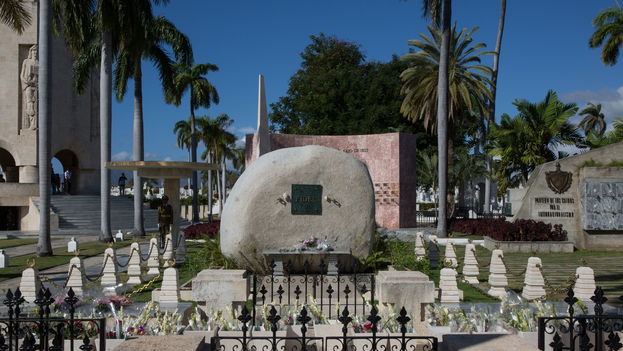
![]() 14ymedio, Miriam Celaya, Havana, 10 October 2017 — In a simple note consisting only of four paragraphs, the official Cuban press reported yesterday a fact as unexpected as it was unusual: this Tuesday, coinciding with the 149th anniversary of the beginning of the War of Independence, “the political act and military ceremony of the burial of the remains of Carlos Manuel de Céspedes and Mariana Grajales” will take place in the cemetery Santa Ifigenia, in Santiago de Cuba.
14ymedio, Miriam Celaya, Havana, 10 October 2017 — In a simple note consisting only of four paragraphs, the official Cuban press reported yesterday a fact as unexpected as it was unusual: this Tuesday, coinciding with the 149th anniversary of the beginning of the War of Independence, “the political act and military ceremony of the burial of the remains of Carlos Manuel de Céspedes and Mariana Grajales” will take place in the cemetery Santa Ifigenia, in Santiago de Cuba.
